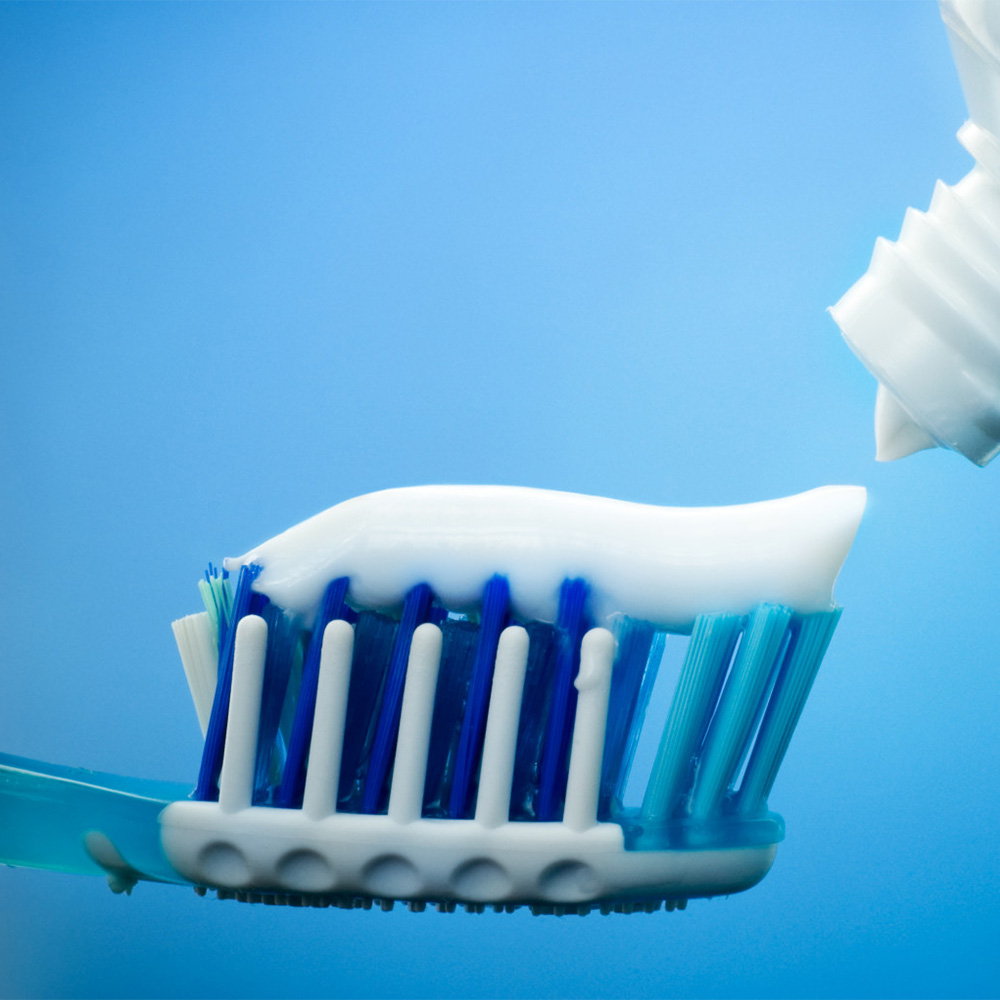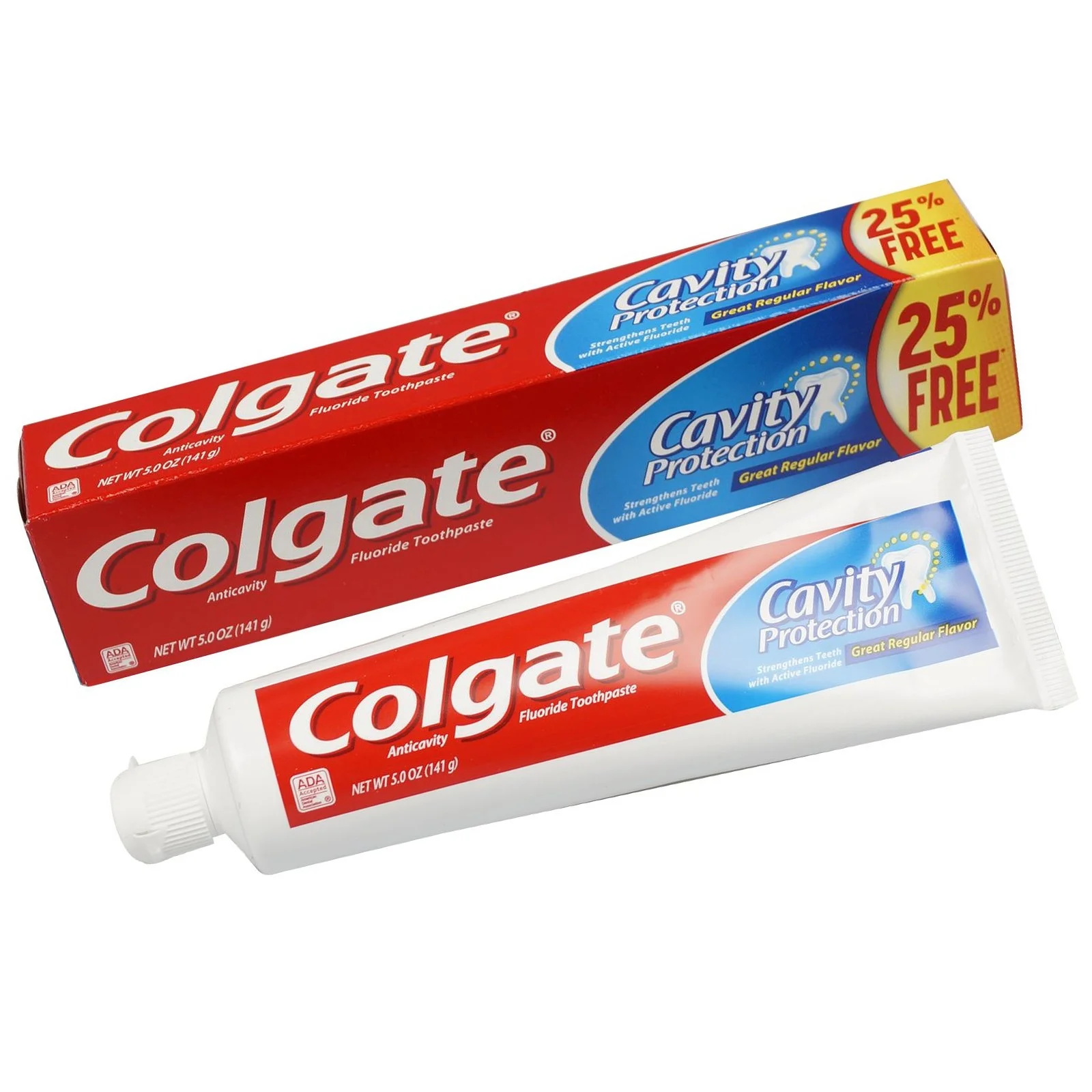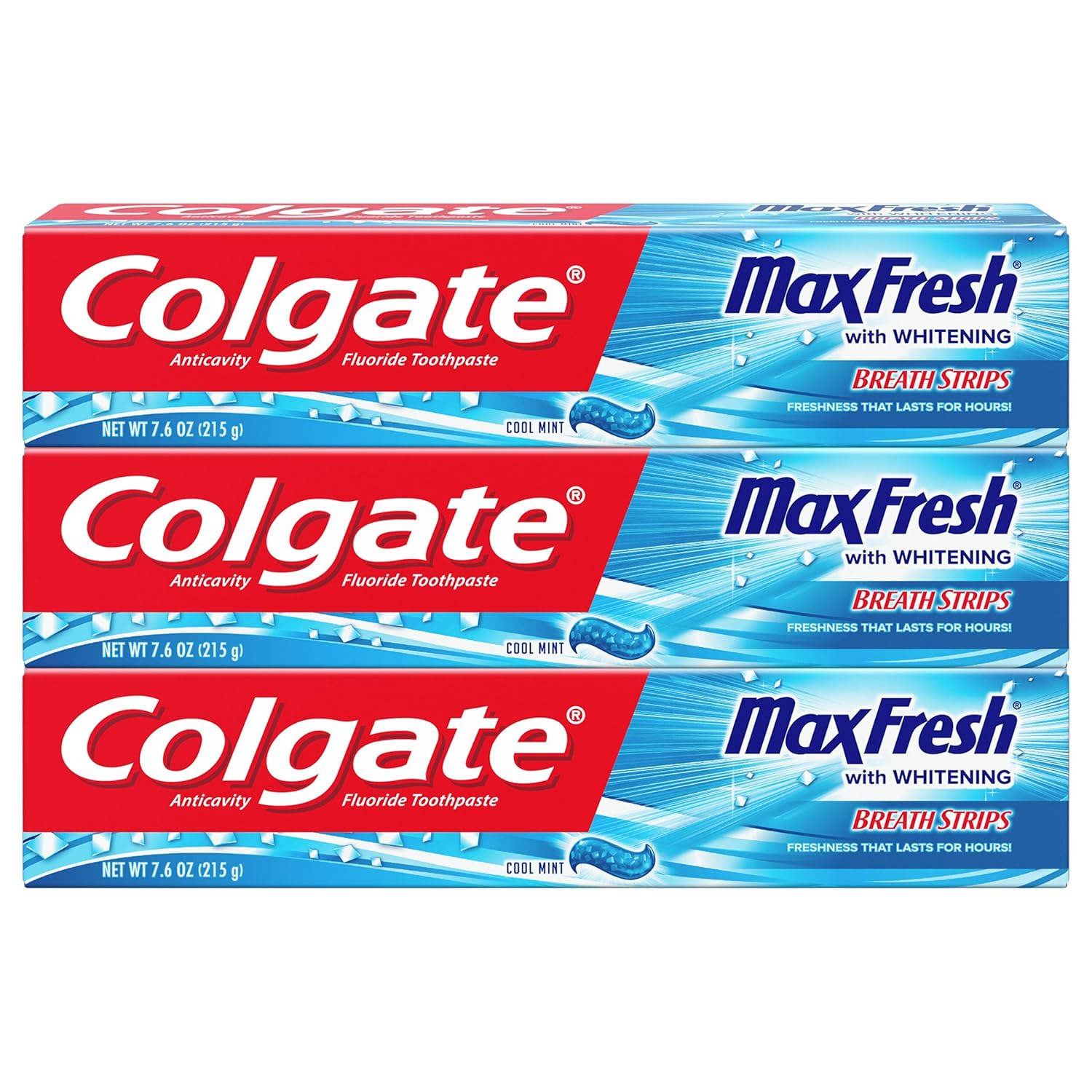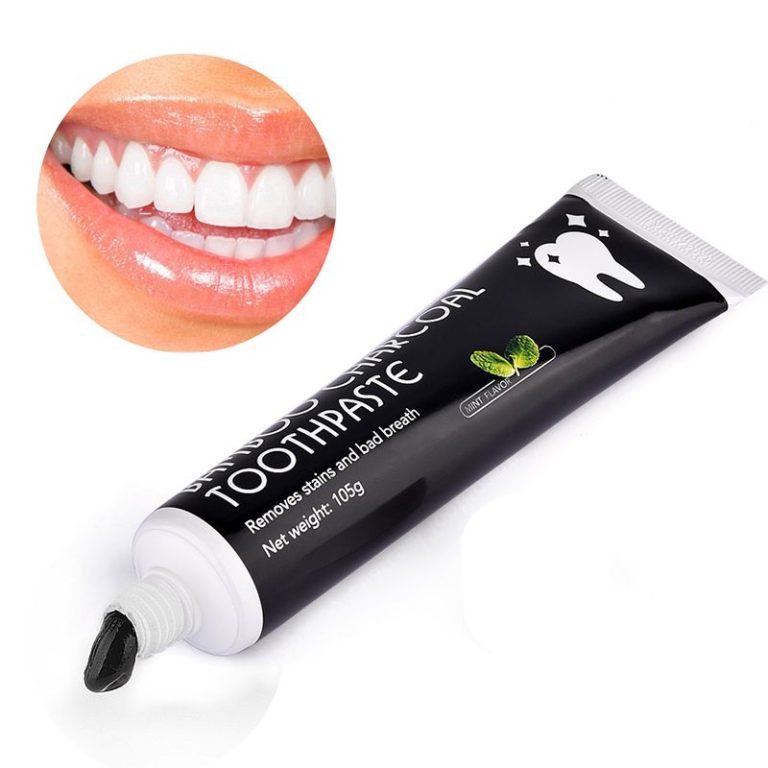
Does Toothpaste Expire? Understanding Shelf Life for Dental Care
Maintaining good oral hygiene is essential, and toothpaste plays a pivotal role in this daily routine. However, a common question arises: does toothpaste expire? Understanding whether toothpaste has an expiration date and how its effectiveness changes over time can help you make informed decisions about your dental care. In this comprehensive guide, we will explore the factors that influence toothpaste’s shelf life, identify signs of expired toothpaste, and provide tips on proper storage to ensure you always use toothpaste that is both safe and effective.
 The Basics: What Does It Mean When Toothpaste Expires?
The Basics: What Does It Mean When Toothpaste Expires?
To comprehend whether toothpaste expires, it’s important to first understand what expiration entails. An expiration date indicates the period during which the manufacturer guarantees the product’s optimal performance and safety. After this date, the toothpaste may not perform as effectively, and its ingredients might degrade. Although toothpaste does not typically become harmful after expiration, its ability to clean teeth and protect against cavities may diminish over time.
Factors Influencing Toothpaste Shelf Life
Various elements determine how long toothpaste remains effective. By understanding these factors, you can better assess whether your toothpaste is still good to use.
Composition of Toothpaste
The ingredients in toothpaste significantly impact its shelf life. Traditional toothpastes typically contain fluoride, abrasives, flavorings, and preservatives. Fluoride, a key ingredient for preventing cavities, tends to remain stable over time. However, natural or organic toothpastes, which may lack certain preservatives, can expire sooner than their conventional counterparts.
Packaging and Storage Conditions
Proper packaging and storage play crucial roles in extending toothpaste’s shelf life. Toothpaste tubes are designed to protect the contents from air and moisture, which can accelerate the degradation of ingredients. Storing toothpaste in a cool, dry place away from direct sunlight helps maintain its integrity. Conversely, exposing toothpaste to high temperatures or humidity can cause it to degrade more quickly, potentially leading to an earlier expiration.
Frequency of Use
How frequently you use your toothpaste can also influence its longevity. A toothpaste tube typically has a shelf life of about two years from the date of manufacture, assuming it is opened no more than occasionally. However, if you use toothpaste daily, especially in large quantities, the tube may deplete faster, necessitating earlier replacement even if it hasn’t reached its expiration date.
Signs That Your Toothpaste Has Expired
Determining whether your toothpaste has expired involves paying attention to several indicators that suggest the product may no longer be effective or safe to use.
Change in Texture or Consistency
One of the most noticeable signs of expired toothpaste is a change in texture or consistency. Fresh toothpaste should have a smooth, gel-like or creamy texture. If you observe lumps, clumps, or any separation of the paste, it may indicate that the ingredients have started to degrade. Additionally, if the toothpaste becomes unusually runny or crumbly, it’s a sign that it may no longer provide the necessary cleaning benefits.
Altered Color or Flavor
Expired toothpaste might exhibit changes in color or flavor. Toothpaste is typically a consistent color, so any discoloration can signal degradation of the ingredients. Furthermore, the flavor may become noticeably different, losing its original taste or developing a sour or off-putting flavor. These changes not only affect the effectiveness of the toothpaste but also make the brushing experience less pleasant.
Unpleasant Odor
A fresh tube of toothpaste should have a clean, minty scent. If you detect an unusual or unpleasant odor, such as a rancid or chemical smell, it’s best to discontinue use. An off smell often indicates that the preservatives are no longer effective, which could compromise the toothpaste’s safety and functionality.
Reduced Effectiveness
If you notice that your toothpaste is not providing the usual level of cleanliness or cavity protection, it might be past its prime. While this can sometimes be due to other factors like brushing technique or diet, a consistent decline in effectiveness could suggest that the toothpaste has expired and its active ingredients have lost potency.
 Potential Risks of Using Expired Toothpaste
Potential Risks of Using Expired Toothpaste
While using expired toothpaste is generally not harmful, there are some potential risks and drawbacks to consider. Knowing these can help you decide whether to continue using your current toothpaste or replace it with a fresh tube.
Reduced Cavity Protection
One of the primary functions of toothpaste is to protect against cavities, primarily through the presence of fluoride. Over time, fluoride levels can decrease, making expired toothpaste less effective at preventing tooth decay. This reduction in cavity protection means that your oral health could be at greater risk if you rely on expired products solely for dental care.
Unpleasant Brushing Experience
Using expired toothpaste can lead to an unpleasant brushing experience due to changes in flavor, odor, or texture. This discomfort might discourage regular brushing, potentially impacting your overall oral hygiene routine.
Proper Storage to Extend Toothpaste’s Shelf Life
Proper storage practices can help prolong the effectiveness of your toothpaste, ensuring that it remains safe and functional for as long as possible.
Keep Toothpaste Sealed
Always ensure that the toothpaste tube is tightly sealed after each use. This prevents air and moisture from entering the tube, which can accelerate the degradation of ingredients. Avoid leaving the cap off the toothpaste for extended periods, especially in humid environments.
Store in a Cool, Dry Place
Store your toothpaste in a cool, dry place away from direct sunlight and heat sources. Bathrooms can often be humid, so it might be better to keep toothpaste in a cabinet or drawer where temperature fluctuations are minimal. Avoid storing toothpaste near stoves, heaters, or areas prone to high temperatures.
Avoid Contamination
To prevent contamination, avoid sharing your toothpaste with others. Sharing can introduce bacteria or other contaminants into the tube, which can affect the toothpaste’s quality and safety. Additionally, refrain from using sharp objects to open the tube, as this can damage the seal and allow air and moisture to enter.
Monitor Expiration Dates
Regularly check the expiration dates on your toothpaste tubes. Make it a habit to rotate toiletries, placing newer products behind older ones to ensure that you use up older items first. This practice helps minimize the chances of using expired toothpaste inadvertently.
Differences Between Regular and Specialized Toothpaste
Not all toothpaste is created equal, and the shelf life can vary depending on the type of toothpaste you use. Understanding these differences can help you choose the right product for your needs while ensuring it remains effective over time.
Regular Fluoride Toothpaste
Regular fluoride toothpaste is the most common type and typically has a shelf life of two to three years from the manufacturing date. These toothpastes contain fluoride to help prevent cavities and are formulated with abrasives to remove plaque and stains. Their preservatives keep the product stable and effective throughout its shelf life.
Whitening Toothpaste
Whitening toothpastes contain additional ingredients like baking soda or peroxide to help remove stains and whiten teeth. These active ingredients can impact the shelf life, as they may degrade over time, reducing the toothpaste’s effectiveness. Therefore, it’s crucial to monitor the expiration dates closely and replace whitening toothpaste more frequently to maintain its stain-removing properties.
Sensitivity Toothpaste
Toothpastes designed for sensitive teeth typically include ingredients like potassium nitrate or strontium chloride to soothe sensitive nerves. These specialized ingredients can also influence the toothpaste’s expiration timeline. Generally, sensitivity toothpaste follows the same shelf life as regular toothpaste, but it’s important to ensure the active ingredients remain potent by adhering to the expiration dates and storage guidelines.
Children’s Toothpaste
Children’s toothpaste often contains milder ingredients and lower fluoride concentrations tailored for younger users. While the shelf life is similar to regular toothpaste, the packaging is usually designed to be more appealing and easier to use for kids. Parents should still monitor expiration dates and ensure that the toothpaste is stored properly to maintain its safety and effectiveness for children’s dental care.
 Tips for Maximizing Toothpaste Effectiveness
Tips for Maximizing Toothpaste Effectiveness
To get the most out of your toothpaste, whether it’s nearing its expiration date or still fresh, consider the following tips to maximize its effectiveness and ensure optimal oral health.
Use the Right Amount
Using the appropriate amount of toothpaste is crucial. For adults, a pea-sized amount is sufficient, while children under three years old should use a smear-sized dab. Using too much toothpaste can lead to excessive foam, which might cause you to rush your brushing and potentially miss cleaning important areas of your teeth.
Maintain Good Oral Hygiene Habits
Toothpaste is just one component of a robust oral hygiene routine. Regular brushing, flossing, and visiting your dentist are essential for maintaining healthy teeth and gums. Additionally, avoid excessive consumption of sugary foods and beverages, which can contribute to tooth decay and negate the benefits of your toothpaste.
Replace Your Toothbrush Regularly
A worn-out toothbrush can reduce the effectiveness of your toothpaste. Replace your toothbrush every three to four months or sooner if the bristles become frayed. A fresh toothbrush ensures that you can effectively remove plaque and debris from your teeth, enhancing the benefits of your toothpaste.
Rinse Thoroughly
After brushing, rinse your mouth thoroughly with water to remove any residual toothpaste and loosened plaque. This practice helps prevent the buildup of toothpaste on your teeth and gums, ensuring that the active ingredients can work effectively without being impeded by excess product.
Myths and Misconceptions About Expired Toothpaste
Several myths surround the topic of does toothpaste expire, leading to confusion and misinformation. Let’s debunk some common misconceptions to better understand the true implications of using expired toothpaste.
Myth 1: Expired Toothpaste Can Cause Health Problems
Many people believe that using expired toothpaste can lead to serious health issues. In reality, expired toothpaste is unlikely to cause harmful effects. The primary concern with expired toothpaste is a reduction in effectiveness, not safety. While some minor irritation could occur due to degraded ingredients, it generally does not pose significant health risks.
Myth 2: Seal Open Toothpaste Doesn’t Expire
Some assume that if the toothpaste tube is not broken or the seal remains intact, the toothpaste remains usable indefinitely. However, even sealed toothpaste has a limited shelf life. Over time, ingredients can break down due to factors like temperature fluctuations and exposure to light, which can affect the toothpaste’s performance regardless of the seal’s integrity.
Myth 3: All Toothpaste Types Expire at the Same Rate
Not all toothpastes expire at the same rate. As discussed earlier, factors such as composition, preservatives, and packaging influence the shelf life of different toothpaste types. Specialized toothpastes like natural, whitening, or sensitivity formulas may expire sooner or have different signs of degradation compared to regular fluoride toothpaste.
Myth 4: You Should Throw Away Toothpaste if Expired
While it’s generally a good idea to use fresh toothpaste for maximum effectiveness, disposing of expired toothpaste is not an emergency. If your toothpaste has expired but shows no signs of degradation, such as changes in texture, color, or odor, it can still be used safely, albeit with potentially reduced benefits. However, if you notice any negative changes, it’s best to replace it to ensure optimal oral hygiene.
 The Environmental Impact of Expired Toothpaste
The Environmental Impact of Expired Toothpaste
Understanding the environmental consequences of disposing of expired toothpaste can help you make more sustainable choices. Here are some considerations regarding the disposal and recycling of toothpaste tubes.
Waste Generation
Toothpaste tubes are typically made from a combination of plastic and aluminum, making them challenging to recycle. Consequently, many toothpaste tubes end up in landfills, contributing to environmental pollution. To minimize waste, try to use up your toothpaste before it expires, reducing the number of tubes you need to discard.
Recycling Options
While most toothpaste tubes are not widely accepted in recycling programs due to their mixed materials, some brands offer take-back programs or use recyclable materials. Research your local recycling guidelines to see if they accept toothpaste tubes and follow proper disposal methods to reduce environmental impact.
Choosing Eco-Friendly Toothpaste
Opting for eco-friendly toothpaste brands that use recyclable or biodegradable packaging can help mitigate the environmental footprint of your dental care products. These brands often prioritize sustainable practices, ensuring that their products are easier to recycle or have a reduced impact on the environment.
Frequently Asked Questions
Does toothpaste expire?
Yes, toothpaste does expire. Most toothpaste has a shelf life of about two to three years from the manufacturing date. After the expiration date, the effectiveness of key ingredients like fluoride may diminish, and the toothpaste’s texture, color, or flavor might change.
What happens if you use expired toothpaste?
Using expired toothpaste is generally not harmful, but it may be less effective at preventing cavities and whitening teeth. Additionally, the toothpaste might develop an unpleasant taste or texture, making brushing uncomfortable.
How long is toothpaste good for?
Toothpaste is typically good for two to three years from the manufacturing date. However, always check the expiration date on the tube and monitor the toothpaste for any signs of degradation.
Can toothpaste go bad without an expiration date?
Yes, toothpaste can go bad even without a printed expiration date. Over time, ingredients can degrade, leading to changes in texture, color, and effectiveness. It’s best to follow the general guideline of using toothpaste within two to three years of purchase.
How can I tell if my toothpaste has expired?
Signs that your toothpaste has expired include changes in texture (lumpy or crumbly), altered color, unpleasant or sour smell, and reduced effectiveness in cleaning your teeth.

Final Thoughts
In conclusion, the question does toothpaste expire is vital for maintaining optimal oral health. While expired toothpaste typically does not pose significant health risks, its effectiveness in preventing cavities and maintaining dental hygiene diminishes over time. Recognizing the signs of expired toothpaste and adhering to proper storage practices can ensure that you always utilize a product that is both safe and effective.
By prioritizing the use of fresh toothpaste and maintaining good storage habits, you can maximize the benefits of your dental products and contribute to better overall oral health. Remember, a simple awareness of your toothpaste’s expiration can lead to a healthier smile and a more effective brushing experience. So, next time you grab your toothbrush, take a moment to check if does toothpaste expire and make sure you’re using a product that truly supports your dental well-being.

